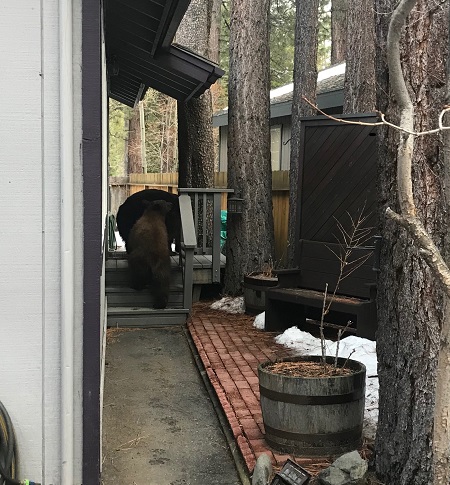Openings or weaknesses in crawl spaces can be exploited by black bears looking for a warm spot to spend the winter. Property owners need to secure their properties in bear country. A black bear found this South Lake Tahoe home to its liking and set up a den underneath it for the winter. CDFW photo by Shelly Blair
hi·ber·nate | \ ˈhī-bər-ˌnāt \
 intransitive verb
intransitive verb
- to pass the winter in a
 torpid or resting state … bears hibernating in their dens
torpid or resting state … bears hibernating in their dens
- to be or become inactive or dormant … let the computer hibernate
– Merriam-Webster
Winter has arrived in the Tahoe Basin, prompting some homeowners and visitors to let down their guard, thinking bear conflicts are over for the season with the bruins off hibernating in the forests somewhere in a deep slumber.
Hardly, say veteran CDFW biologists. While most Tahoe Basin black bears definitely slow down and den up over the winter, some continue to access human food sources and remain active year-round.

A black bear explores a South Lake Tahoe front porch in winter looking for food. CDFW photo by Shelly Blair
It’s never too late for property owners to board up any openings under homes and decks if they know there’s no bear already inside. Bears are wild animals that do not belong under cabins or houses. They can be unpredictable and potentially dangerous if they feel trapped or become startled.
Vacation homeowners winterizing their properties should remove all food items from their unoccupied residences, including spices and canned goods. Biologists also encourage window coverings for unoccupied properties. Tahoe bears have been known to associate refrigerators and freezers with food (and can peek into homes looking for these appliances when searching for a potential meal). Tahoe residents and visitors need to remain vigilant in winter to secure food and garbage to discourage any active bears from becoming habituated and reliant on humans for food.
Being “bear aware” is a year-round necessity in the Tahoe Basin.